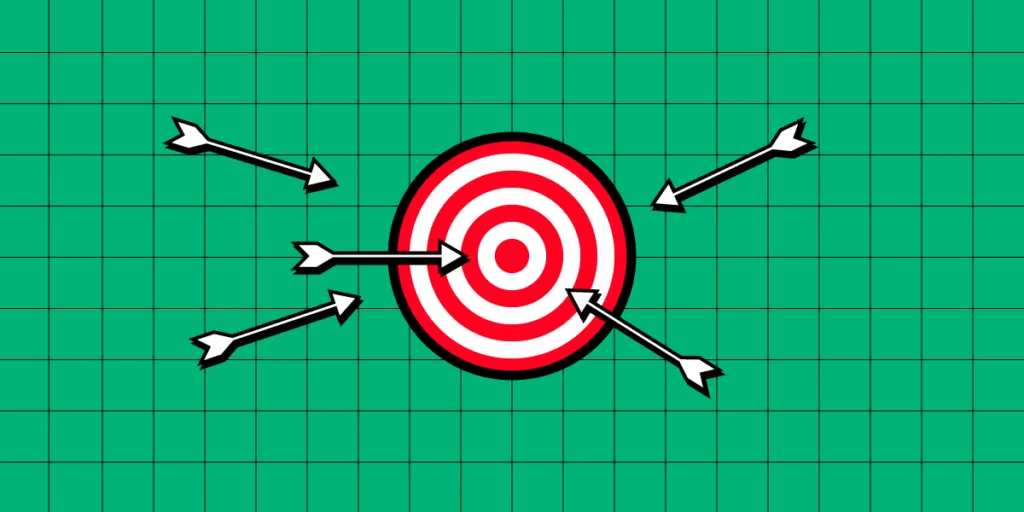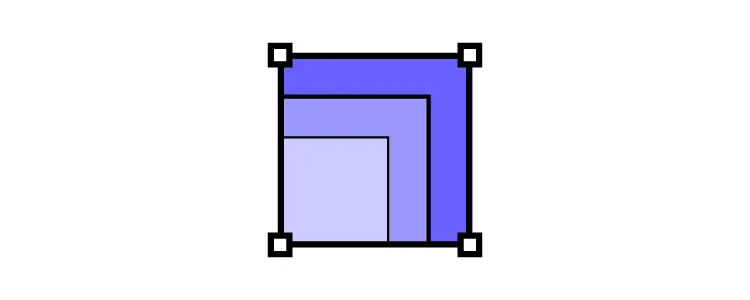Design Mission Statement – Examples and Tips

Designing a meaningful and impactful future begins with a clear and concise mission statement. This article explores the essential elements of an effective design mission statement, including a step-by-step guide to crafting one that reflects your team’s unique values, principles, and aspirations.
Whether you’re a UX designer, DesignOps leader, or product owner, understanding the importance of a good mission statement is crucial for aligning your team, driving innovation, and inspiring growth.
Create real design process improvements and make an impact on the speed and efficiency of prototyping with component-driven design with UXPin Merge. Sync your dev’s UI components with UXPin and design up to 10x faster. Visit our Merge page for more details.
What is a Design Mission Statement?
A design mission statement guides designers by outlining and defining company values, principles, and aspirations in design. This concise declaration helps define the UX team’s unique approach to product design and serves as a foundation for creative and user experience decision-making.
By establishing a clear sense of direction, a mission statement enables designers to focus on their goals and consistently deliver value to users, stakeholders, and collaborators.
How does a design mission statement fit with the overall UX strategy?
A design mission statement incorporates the overall UX strategy by guiding and aligning design decisions with organizational goals. It fosters consistent, purposeful design choices, enhancing the user experience across products and platforms.
What is a Vision Statement?
A design vision statement outlines the long-term aspirations and desired future state for a product or organization’s design department. It provides designers with a clear direction or “north star” and is a source of inspiration and motivation.
Vision Statement vs. Mission Statement – What’s the difference?
- A design mission statement focuses on the organization’s present design objectives, principles, and values. It establishes the foundation for design decisions, ensuring alignment with the organization’s goals.
- A design vision statement describes where the organization wants to be in the future, while the mission statement defines its current purpose and approach to design.
Key Elements of an Effective Design Mission Statement

Vision and values
The foundation of a strong design mission statement lies in articulating your team’s aspirations and core beliefs. Clearly define your organization’s purpose and what it stands for, guiding the team toward meaningful outcomes. For example, a company focused on sustainability might emphasize eco-friendly design practices in its mission statement.
Design philosophy and principles
Outline the design approach that underpins your team’s work. You can include aspects like user-centered design, simplicity, or innovation. By expressing these principles, you establish a framework that drives consistent decision-making. For example, if accessibility is a priority, your mission statement could mention a commitment to inclusive design for all users.
Focus on user needs and experience
A successful design mission statement places your target audience at the center, highlighting a dedication to understanding and addressing their needs. Your statement must emphasize the importance of empathy, research, and user testing. For example, you might mention a commitment to providing intuitive, enjoyable, and seamless experiences that solve users’ problems.
Commitment to collaboration and communication
Effective design implementation often requires teamwork and clear communication with stakeholders. In your mission statement, highlight the value of collaboration and transparent dialogue, fostering a culture of openness and constructive feedback. For example, a mission statement could mention fostering cross-functional collaboration to ensure well-rounded and high-quality design solutions that incorporate diverse input and ideas.
Continuous learning and growth
The design and technology landscape is ever-evolving. A strong mission statement should reflect a dedication to improvement and adaptation. Encourage a growth mindset within your team, emphasizing the importance of learning from mistakes, staying updated on industry trends, and refining skills. For instance, your mission statement might underline a commitment to ongoing professional development and experimentation with new design methodologies.
Crafting Your Design Mission Statement

Setting the stage
Before diving into creating your design mission statement, setting the stage for a successful and collaborative session is essential. Involving the right people, preparing the appropriate materials, and choosing the ideal setting will help ensure that your mission statement truly reflects the values and aspirations of your team.
- Who to include: Invite key members of your design team, including designers, DesignOps leaders, product owners, and any other relevant stakeholders. Including a diverse group ensures that the mission statement encompasses various perspectives and insights.
- The setting: Select a comfortable, distraction-free environment to foster creativity and collaboration. This location could be a dedicated meeting room, a quiet office corner, or a virtual space for remote teams. Ensure the setting encourages open communication and allows for brainstorming and sharing ideas.
- Materials: Provide materials to facilitate brainstorming and idea generation, such as whiteboards, markers, sticky notes, and pens. For remote UX workshops, use online collaboration tools like Miro or Mural.
Step 1 – Reflect on your organizational and UX values
Consider your company’s broader values and how they align with your UX team’s objectives. Determine the core values that will guide your design decisions.
Action: List your organization’s values and identify those most relevant to your design team. Reflect on how these values influence your design process and outcomes.
Step 2 – Identify your design principles and philosophies
Establish your team’s fundamental design principles, such as simplicity, user-centricity, innovation, accessibility, etc.
Action: Brainstorm and list the design philosophies that resonate with your team. Consider how these principles shape your team’s design initiatives and problem-solving approach.
Step 3 – Consider the impact you want to make on users, stakeholders, and colleagues
Think about the desired outcomes of your design work and how they contribute to the success of users, the organization, and your team.
Action: List the key impacts you want to achieve through your design work. Reflect on the benefits for users, the company, and your team members.
Step 4 – Balance between idealism and pragmatism
While it’s essential to have aspirational goals, your mission statement should also be grounded in reality. Strive for a balance between lofty ideals and practical, achievable objectives.
Action: Review your mission statement draft and evaluate if the goals are attainable while still being ambitious. Adjust the statement as needed to ensure a balance between idealism and pragmatism.
Step 5 – Involve your team in the process
Gather input from team members and non-designers to ensure the mission statement represents your organization and design team’s values and aspirations.
Action: Organize a workshop or brainstorming session with your team to discuss and refine the mission statement. Incorporate feedback and suggestions to create a statement that truly represents your team.
Step 6 – Keep it concise and memorable
A powerful mission statement is brief, clear, and easy to remember. Aim to communicate your message in a way that resonates with your team and stakeholders.
Action: Edit and refine your mission statement to ensure it’s succinct and straightforward. Remove unnecessary words or phrases, focusing on the most critical elements of your team’s mission.
Examples of Design Mission Statements

We’ve done our best to find mission statements relevant to design. Since these are generally internal documents, they can be challenging to find. Here are three mission statement examples and the lessons you can take from them.
Google’s mission statement
“To organize the world’s information and make it universally accessible and useful.” – Source: Google’s about page.
While not explicitly a design mission statement, Google’s mission statement encompasses its design philosophy, as they aim to create user experiences that are intuitive and accessible to everyone.
Human Experience’s mission statement
“Our mission is to elevate patient safety, create beautiful therapeutic spaces for healing, and establish viable long-term programs. Through our design and consulting work, we advocate for all stakeholders in behavioral health, including patients, hospital administration and staff, and healthcare architects. Simply put, we want to make a difference in the world. When we combine our beliefs with our years of experience, we believe we can.” Source: Human Experience–Who We Are.
Human Experience’s mission statement showcases its commitment to enhancing patient safety and creating therapeutic spaces for healing. They emphasize the importance of considering all stakeholders and advocating for their cause in the healthcare industry. This mission statement demonstrates the power of clearly outlining the purpose and goals of a design team, inspiring change in their field.
Spotify’s mission statement
“Our mission is to unlock the potential of human creativity—by giving a million creative artists the opportunity to live off their art and billions of fans the opportunity to enjoy and be inspired by it.” Source: Spotify Design.
Again, not a design-specific mission statement, but a fantastic example of placing users front and center. Spotify’s mission statement emphasizes the power of human creativity, focusing on the dual goals of supporting artists and inspiring fans.
This statement showcases their dedication to fostering a vibrant creative expression and enjoyment ecosystem. By putting both creators and listeners at the heart of its mission, Spotify highlights the importance of prioritizing the needs and aspirations of its diverse user base.
Updating and Evolving Your Design Mission Statement

Updating and evolving a design mission statement is crucial to maintaining relevance as the design landscape and user needs change. Periodically revisiting the statement ensures it aligns with the organization’s current goals and priorities.
Design teams should consider updating their mission statement when:
- Organizational goals shift: Reflect new objectives to keep design efforts focused.
- Industry trends change: Adapt to emerging technologies and user expectations.
- Team dynamics evolve: Accommodate new members or leadership changes.
- User needs expand: Stay responsive to shifting user preferences and requirements.
Design products that align with your company’s vision using the world’s most advanced code-based design tool. UXPin Merge bridges the gap between design and development to create a reliable single source of truth across the organization, aligning teams toward a common goal. Visit our Merge page for more details and how to request access.




